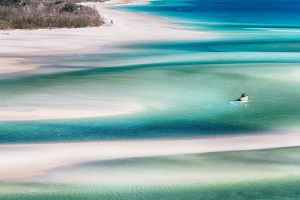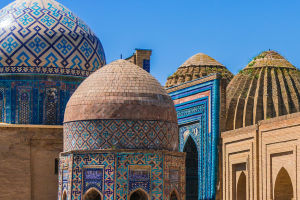For Lykkers seeking timeless beauty and architectural marvels, Samarkand offers an unforgettable journey through a city that once stood at the crossroads of continents.
With its majestic squares, intricate tiles, and deep historical layers, Samarkand remains one of Central Asia’s most captivating destinations. A stay of two or three days is ideal for covering its highlights, though extra time allows for a deeper connection with its atmosphere.
Where Samarkand Is and Why It Matters
A Strategic Location
Samarkand is located in southeastern Uzbekistan, not far from the border with Tajikistan. It is one of the oldest inhabited cities in Central Asia and once flourished as a key hub along the Silk Road—the legendary network of trade routes linking East and West.
An Ancient Legacy
First known as Marakanda to the Greeks, the city dates back to the 8th century BCE. Its prominence grew when Alexander the Great took it in 329 BCE.
Over centuries, it shifted hands and cultures, reaching its golden age in the 14th century under the rule of a powerful leader who transformed Samarkand into a center of learning and art. Although its influence began to fade in the 16th century, its cultural significance remains.
Top Attractions in Samarkand
Registan Square: A Cultural Heart
Once the bustling center of medieval Samarkand, the Registan Square is surrounded by three monumental buildings. The Ulugbek Madrasa, built in the early 15th century, features starry motifs symbolizing its founder’s passion for astronomy.
Across from it are the Sher Dor Madrasa and the richly decorated Tilla-Kari Madrasa, both added in the 17th century. Entry costs around 40,000 UZS (~3 EUR), and it's open daily from 9:00 AM to 7:00 PM.
Bibi-Khanym Complex
Near the Siab Bazaar stands one of the grandest structures of its kind from the past. Once among the largest in the region, it includes a main courtyard, a large marble book stand, and smaller adjoining spaces. Its striking blue domes and ornamentation continue to attract visitors and photographers alike.
Shah-i-Zinda: A Path Through History
This stunning necropolis features a long alley lined with mausoleums showcasing some of the finest tilework in Central Asia. The most admired monument is the Mausoleum of Shodi Mulk Oko, where female members of a ruling family were laid to rest.
Visitors are encouraged to dress modestly and behave respectfully during their visit. The site is open from 9:00 AM to 6:00 PM and tickets are priced at about 25,000 UZS (~2 EUR).
Gur-e-Amir Mausoleum
This site holds the resting place of the city’s most famous ruler, along with his descendants. Despite its relatively simple structure, its turquoise dome and intricate façade make it a visually striking monument. Open daily from 9:00 AM to 7:00 PM, entry costs around 30,000 UZS (~2.50 EUR).
Ulugbek Observatory
The ruins of this 15th-century observatory include a 30-meter underground sextant, once used for measuring star positions with remarkable accuracy. It reflects the city’s contributions to science and discovery. Entrance is about 15,000 UZS (~1.25 EUR), and it's open from 9:00 AM to 5:00 PM.
Travel Planning and Practical Information
Best Time to Visit
The ideal seasons for a trip to Samarkand are spring (April to June) and autumn (September to October), when the weather is mild and skies are generally clear.
Getting There
Samarkand is well-connected by rail and air. The fastest option is to fly to Tashkent, Uzbekistan’s capital, then take a domestic flight or high-speed train to Samarkand. Trains from Tashkent take 2 to 3 hours and run several times daily. Shared taxis and buses also operate between major cities in the region.
Public Transport Within the City
Samarkand’s center is walkable, and taxis are inexpensive. There is also a limited but reliable network of minibuses and trolleybuses. Rides within the city generally cost less than 1 EUR.
Health Precautions
No mandatory vaccinations are required for visiting Uzbekistan. However, general travel immunizations like tetanus, hepatitis A and B, typhoid, and meningitis are recommended. Travelers should consult a healthcare provider before departure.
In Conclusion
Samarkand offers Lykkers a gateway into a realm of history, architecture, and cultural brilliance. From its legendary squares to its peaceful mausoleums, every corner of the city tells a story rooted in centuries of global exchange and artistic ambition. A well-planned visit to Samarkand promises not just beautiful photos, but also a deeper appreciation for a place that helped shape the past and still inspires awe today.


